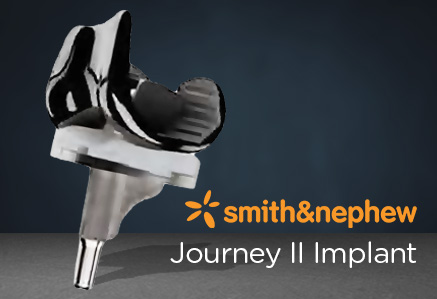Bilateral Knee Replacement
Knee conditions normally involve disease or injury that can disturb the normal functioning of the joint. This can result in knee pain, weakness, instability, and limited movement. With longer life expectancy and greater activity levels, joint replacement is being performed in greater numbers on patients thanks to new advances in artificial joint technology provided by the orthopedic surgeons at Peninsula Bone & Joint Clinic.
This joint is formed by two or more bones that are connected by thick bands of tissue called ligaments.
The knee is the largest joint in the body and is made up of three main parts:
- The lower end of the thigh bone, or femur.
- The upper end of the shin bone, or tibia.
- The kneecap, or patella.
At some time in life, you may experience knee pain.
When the cartilage has worn away in both knees, an artificial knee (called a prosthesis) can take its place.
The surgery to implant a prosthesis in both knees at the same time is termed a Bilateral Total Knee Replacement. Only the surface of the joint is removed – the arthritic ends of the bones are shaved off and replaced with new metal and plastic surfaces. The knee replacement recreates almost normal function of the knee, and its main goal is to relieve pain. It may also help to restore motion of both knees and straighten the limbs.
Treatment
At some time in life, you may experience knee pain.
When the cartilage has worn away in both knees, an artificial knee (called a prosthesis) can take its place.
The surgery to implant a prosthesis in both knees at the same time is termed a Bilateral Total Knee Replacement. Only the surface of the joint is removed – the arthritic ends of the bones are shaved off and replaced with new metal and plastic surfaces. The knee replacement recreates almost normal function of the knee, and its main goal is to relieve pain. It may also help to restore motion of both knees and straighten the limbs.
What is a Simultaneous Bilateral Total Knee Replacement?
A Simultaneous staged procedure means to replace both knees on the same day, under one anesthesia. This takes place in the same surgical event, within one hospital stay and is followed by a single rehabilitation period.
What is a Staged Bilateral Total Knee Replacement?
The Staged procedure means that both knee replacements take place as two separate surgical events. Surgeries are performed several months apart one from the other, requiring two hospital stays, two anesthesias and two rehabilitation periods.
What are the advantages of a Simultaneous Total Knee Replacement?
The advantages of having a Simultaneous procedure include: only one surgical event, single anesthesia, shorter overall hospital stay and the possibility of rehabilitating the patient symmetrically.
What are the advantages of a Staged Total Knee Replacement?
The advantages of having a Staged procedure include apparently lower stress level for the cardiovascular system, less complications related with the heart and the deep veins, decreased infection rate as well as lower possibility of requiring banked blood after surgery. This is an excellent choice for a patients with cardiac, vascular or pulmonary diseases.
Treatment Highlights






